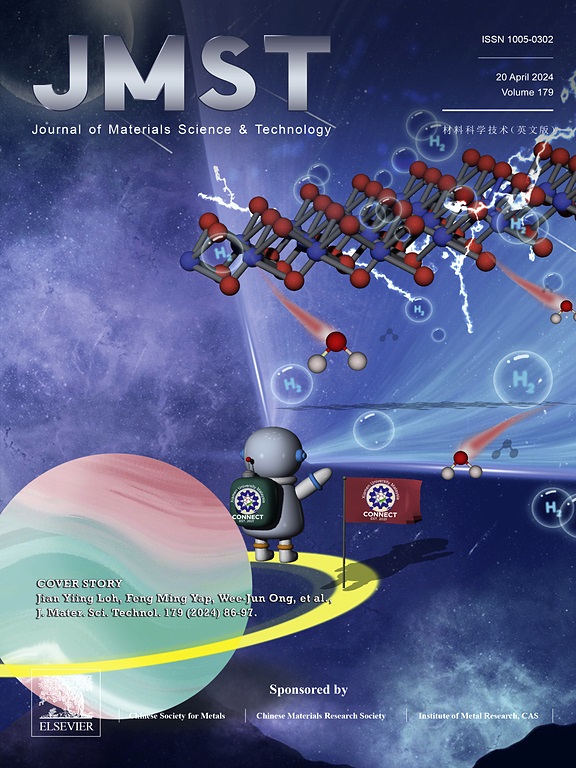Photocatalytic H2 evolution over Ni3(PO4)2/twinned-Cd0.5Zn0.5S S-scheme homo-heterojunction using degradable plastics as electron donors
IF 11.2
1区 材料科学
Q1 MATERIALS SCIENCE, MULTIDISCIPLINARY
引用次数: 0
Abstract
The development of catalysts that can efficiently separate both bulk and interface charges is crucial for conversion and utilization of solar energy. In this study, a homo-heterojunction was fabricated by combining twinned-Cd0.5Zn0.5S (T-CZS) and Ni3(PO4)2 with crystalline water (NiPO) using a solvent evaporation strategy for efficient photocatalytic H2 evolution in water containing degradable plastics. The bulk phase of T-CZS consists of wurtzite Cd0.5Zn0.5S (WZ-CZS) and zinc blende Cd0.5Zn0.5S (ZB-CZS), they exhibit a slight difference in energy range and can form S-scheme homojunction, while NiPO and T-CZS constitute the S-scheme heterojunction, they work together to promote the separation of bulk and interface charges. This double S-scheme homo-heterojunction achieves a hydrogen evolution rate () of 73.2 mmol h−1 g−1 over 8% NiPO/T-CZS in a solution mainly composed of polylactic acid (PLA), which exhibits an increase by factors of 243.0 and 4.5 compared to NiPO and T-CZS individually. Meanwhile, PLA plastics are degraded into organic chemicals including formic acid, acetic acid, and pyruvic acid. Moreover, NiPO exhibits (localized surface plasmon resonance) LSPR effect, which can broaden the light absorption range of the system, reduce the H2 evolution overpotential, and enhance electron utilization efficiency. Based on electron capture experiments and band theory analysis, the introducing of plastic as an electron donor further accelerates the evolution process of H2, while alkaline sodium hydroxide (NaOH) solution promotes the PLA dissociation and enhances oxidation driving force, indirectly promoting the H2 evolution kinetics of this system. The present research offers prospective solutions for engineering solar-powered H2 evolution to tackle energy challenges.

求助全文
约1分钟内获得全文
求助全文
来源期刊

Journal of Materials Science & Technology
工程技术-材料科学:综合
CiteScore
20.00
自引率
11.00%
发文量
995
审稿时长
13 days
期刊介绍:
Journal of Materials Science & Technology strives to promote global collaboration in the field of materials science and technology. It primarily publishes original research papers, invited review articles, letters, research notes, and summaries of scientific achievements. The journal covers a wide range of materials science and technology topics, including metallic materials, inorganic nonmetallic materials, and composite materials.
 求助内容:
求助内容: 应助结果提醒方式:
应助结果提醒方式:


